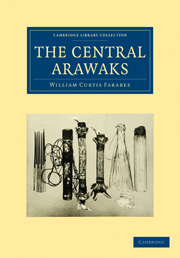Summary
The Atarois originally occupied the open savannah territory between the upper Rupununi and the Cuduwini Rivers. At present they do not exist as a separate tribe and no longer speak their own language. They have been absorbed by the Wapisianas, whose language is in common use. Very few can speak Ataroi and the language will disappear with this generation. Only three individuals of pure blood–one man, a woman relative, and her daughter–and not more than a hundred half-bloods remain. Physically, linguistically and culturally they are very closely related to the Wapisianas.
Their material cultures are identical, but the Atarois have some myths in addition to those found among the Wapisianas. The Atarois live in the center of the traditional home of the tribe and have no stories of migrations. Tuminkar and Duid lived here before men were created and continued to live in the mountains about the region for a long time thereafter. Tuminkar's home was on Mount Mariwidwantaua. His dogs were kept on Mount Walirdap. (The word walir means fox and dap house. These foxes were used by Tuminkar as dogs to hunt with before he made dogs out of beeswax.) Tuminkar's son was first buried under the rock Maridiku; when he came to life again he came out on top of Mariwidwantaua, Tuminkar's home. He was buried again in the great flat rock, Tcakui, which stands behind Karawaimin.
- Type
- Chapter
- Information
- The Central Arawaks , pp. 131 - 135Publisher: Cambridge University PressPrint publication year: 2009First published in: 1918



